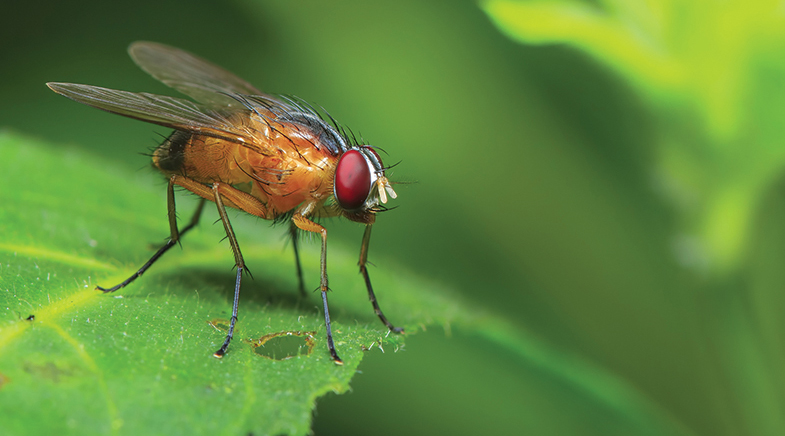Maintaining a healthy crosstalk between heart, kidney
-
- from Shaastra :: vol 01 issue 02 :: Mar - Apr 2022

Reactive oxygen species (ROS), a by-product of cellular damage, is usually treated as a rogue element that must be scavenged to keep cells healthy. But now, scientists have shown that ROS helps maintain a healthy crosstalk between the heart and the kidney.
"There is a need to coordinate the functions of the heart and the filtration unit," says Sudip Mandal, a developmental biologist at the Indian Institute of Science Education and Research (IISER), Mohali.
If blood rushes into the kidney, the kidney may signal the heart to slow it down; if the filtration capacity is high, the kidney may tell the heart to pump more. "This crosstalk is very important for a normal physiology between these two organs," Mandal adds.
Working with his colleague and partner Lolitika and their students, Mandal showed that this crosstalk between the heart and the kidney in drosophila (fruit flies) is triggered by ROS molecules. The work appeared in Science Advances in mid-February.
This can be used as a model to explore what happens if you have a diabetic fly or an obese fly or a fly which is fed a high-protein or low-protein diet.
The heart in fruit flies is surrounded by an extracellular matrix (ECM), a network of proteins, glycoproteins and similar biomolecules. The optimal amount of matrix around the heart is regulated, not by the heart directly, but another cell type - called the pericardial cell - which produces ROS. Pericardial cells are fly equivalent of the kidney nephrocytes and function as filters too. Excess production of ECM results in fibrosis of the heart.
"The flies do not have blood vessels like mammals and hence the blood - haemolymph in the case of the flies - is in open circulation and all organs are bathed with haemolymph, which carries the nutrients required by the organs. Haemolymph also carries toxic materials, like our blood does. This is done by pericardial cells. When the haemolymph passes through the pericardial cells, toxic materials get filtered and destroyed," he says.
The pericardial cells in drosophila are a rendition of the filtration unit, which is the kidney in higher order animals, Mandal adds. The scientists have shown how this crosstalk takes place in drosophila between pericardial cells, which function as the filtration unit, and the heart, which pumps the haemolymph.
"This can be used as a model to explore what happens if you have a diabetic fly or an obese fly or a fly which is fed a high-protein or low-protein diet. We will be able to know how this central thing will be affected in all these altered-metabolic conditions," Mandal says.
Their study demonstrated that the pericardial cells normally have high levels of ROS, which work as signalling molecules and turn on the expression of a gene called Upd3 - a cytokine. Once it is expressed, the cytokine is released by the pericardial cells. Now Upd3 triggers pericardin from the fat cells which come out and form the cardiac matrix.
"For the first time it has been shown how ROS is regulating a cytokine which in turn is regulating a collagen-like molecule involved in the formation of ECM... It gives us an idea how the functioning of these two organs is coordinated," Mandal says.
Have a
story idea?
Tell us.
Do you have a recent research paper or an idea for a science/technology-themed article that you'd like to tell us about?
GET IN TOUCH














